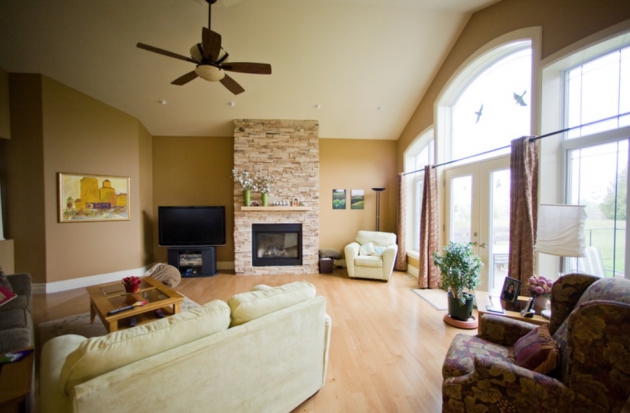When it is cold outside, our thoughts tend to be dominated by images of feeling cozy and warm inside your home. But can your heating produce too much heat? While we like to feel toasty, warm, is there such a thing as excessive heat? Well, yes, if your furnace is generating too much heat, it could leave you excessively sweating, feeling stuffy and wasting energy. Another drawback of heating producing excessive heat is that your system will suffer excessive wear and tear. While your heating is being overused, there is the potential for it to break down. So, here we’ll explore this topic in more detail to help you understand if your heating system has a problem.
The Possible Reasons Why Your Furnace May be Producing Excessive Heat:
If you are finding your home feels stuffy or your energy bills have spiked, you will need to establish whether your furnace is producing excessive heat. The possible reasons include:
Constant Running:
This is the most obvious cause, but it is the typical culprit of having too much heat inside your home. Many of us are tempted to leave our furnaces running on maximum when there is a cold snap, but this is likely overkill for your heating needs.
The constant running may not be due to you being enthusiastic with your furnace settings. Your furnace may have a broken switch or stuck buttons, or there could be a wiring issue on your thermostat. For whatever reason, having your furnace constantly running can be a source of repair and maintenance issues.
Your Filters are Clogged:
When your filters in your HVAC system are dirty or clogged,the fan speed slows down and air movement is reduced. This means that the hot air produced while the system is running will be lingering in your ductwork even after you’ve switched off your heating.
While this may seem a way to get free heating, it can cause confusion with the system sensors. So, although there may be heat lingering in the ductwork causing your room to feel warm, the thermostat may sense a lower temperature and trigger the furnace to fire up again.
An effective way to test whether this is the cause of your heating system producing too much heat, is to change out your filters. In addition to seeing if the filter is dirty, you can then check if the problem persists and you’re still experiencing overheating.
Thermostat Issues:
The thermostat is at the center of your HVAC system, triggering when the furnace needs to fire up and when it should stop. So, if your thermostat is faulty it can easily cause the system to produce excessive heat inside your home. An incorrectly calibrated or broken heating sensor in the thermostat can cause it to incorrectly detect the air temperature in your home.
Fortunately, there are a number of thermostat issues that can be easily resolved by an HVAC technician. In the worst case scenario, you may need a replacement thermostat, but this could provide an opportunity to upgrade to a smart thermostat. Smart thermostats can adapt to your habits for optimum heating and cooling performance with energy efficiency improvements.
Your System is Poorly Sized:
If you’ve only recently had your heating system installed or the excessive heating has been an issue since the installation, it may have been incorrectly sized. This is a common problem, particularly when amateurs perform the installation or you don’t use a specialist HVAC installation team.
When a heater is too large for your space, it will rapidly increase the temperature, which can lead to overheating. It will also have the problem of short cycling. This is when the system rapidly turns on and off. This can not only compromise your home comfort, but it can waste energy and increase the wear and tear on your system, leading to repair bills and a premature need for replacement.
Unfortunately, there is no real fix for your system being poorly sized. The only real option is to have the oversized equipment replaced. Just be sure to consult an experienced HVAC installation specialist to install your new equipment, so you don’t have to worry about the new heater being the wrong size.
Your HVAC technician should perform calculations to assess the optimum size of heater needed for your home.
Control Board Problem:
The control board is a vital electronic component of your heater. There is a control board inside heat pumps, electric furnaces and gas furnaces. So, regardless of the type of heater, it is likely to have a control board inside.
If your control board is faulty, it can trigger the heater to run for longer than optimal, since it doesn’t send the signal for the system to cycle down.Your control board is delicate, but it may be possible for it to be repaired by an experienced professional. Unfortunately, in the worst case scenario, you may need to have your control board replaced.
A Broken Limit Switch:
If you have a natural gas furnace, it will have a limit switch. This is a safety feature that will cause the furnace to shut down in the event that it is overheating. Should your limit switch be broken, your furnace will continue to run. This will not only cause the air temperature inside your home to be too high, but it will use up far more energy than usual.
While it is possible to shut down the furnace using the furnace switch, this will not be feasible as a method of continuing to use the furnace to heat your home. The best idea is to shut down the furnace and contact your HVAC repair team.
Conclusion:
In addition to causing you to feel uncomfortable, when your heater is producing too much heat, it can impact the components of your system and cause skyrocketing energy bills. If you are having issues with your home feeling too hot, it is time to speak to your HVAC repair technician.

